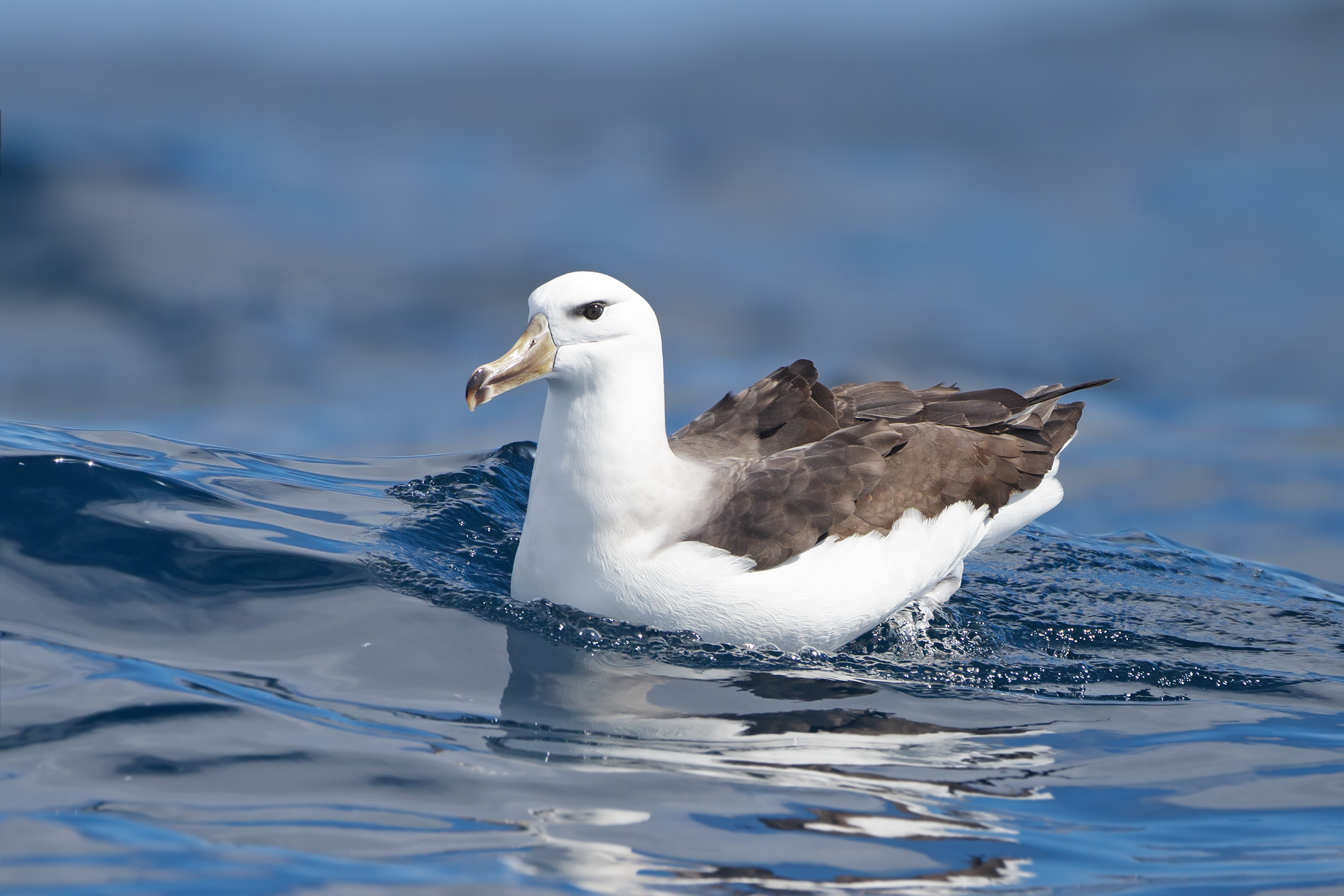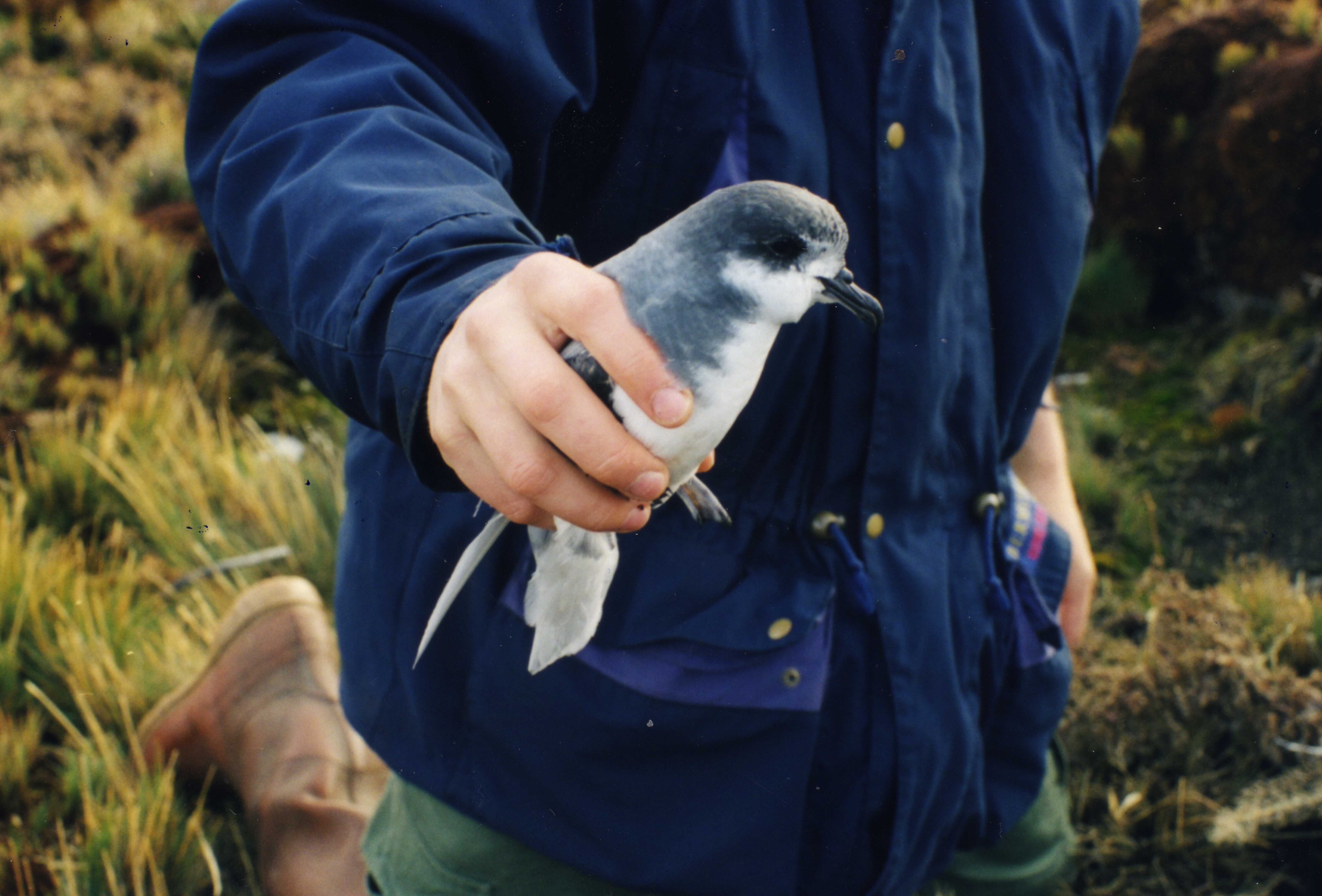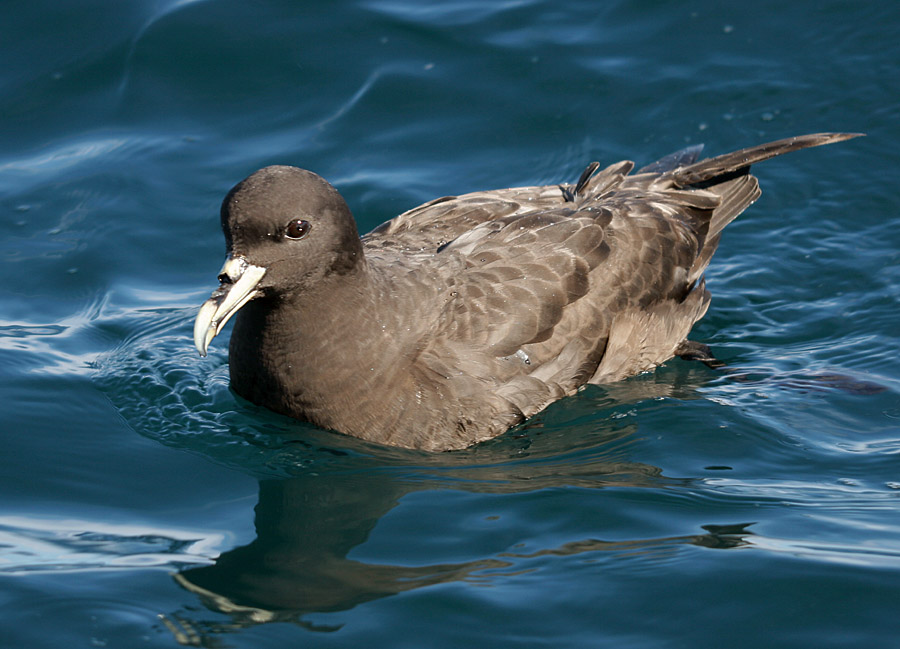|
ĂŽle De L'Est
ĂŽle de l'Est, or East Island, is a part of the subantarctic archipelago of the Crozet Islands. With an area of it is the second largest island of the group. It is part of the French Southern and Antarctic Lands. Description The island is the easternmost of the archipelago, lying about 20 km east of ĂŽle de la Possession (Possession Island). The landscape is mainly bare rock; it is the most mountainous in the archipelago, with a high point of 1090 m, and a rugged coastline of high cliffs. It is dissected by several steep-sided valleys of glacial origin. The only introduced animals are rabbits. There is no human infrastructure; it is only occasionally visited by researchers. Important Bird Area The island has been identified as an Important Bird Area (IBA) by BirdLife International as a breeding site for seabirds. Key species include king, gentoo, macaroni and northern rockhopper penguins, wandering, grey-headed, light-mantled, sooty and black-browed al ... [...More Info...] [...Related Items...] OR: [Wikipedia] [Google] [Baidu] |
Crozet Islands
The Crozet Islands (french: ĂŽles Crozet; or, officially, ''Archipel Crozet'') are a sub-Antarctic archipelago of small islands in the southern Indian Ocean. They form one of the five administrative districts of the French Southern and Antarctic Lands. History Discovery and early history The Crozet Islands were discovered on 24 January 1772, by the expedition of French explorer Marc-Joseph Marion du Fresne, aboard ''Le Mascarin''. His second-in-command Jules (Julien-Marie) Crozet landed on ĂŽle de la Possession, claiming the archipelago for France. The expedition continued east and landed in New Zealand, where Captain Marion and much of his crew were killed and cannibalized by Maori. Crozet survived the disaster, and successfully led the survivors back to their base in Mauritius. In 1776, Crozet met James Cook at Cape Town, at the start of Cook's third voyage. Crozet shared the charts of his ill-fated expedition, and as Cook sailed eastward, he stopped at the islands, naming ... [...More Info...] [...Related Items...] OR: [Wikipedia] [Google] [Baidu] |
Black-browed Albatross
The black-browed albatross (''Thalassarche melanophris''), also known as the black-browed mollymawk,Robertson, C. J. R. (2003) is a large seabird of the albatross family Diomedeidae; it is the most widespread and common member of its family. Taxonomy Mollymawks are albatrosses in the family Diomedeidae and order Procellariiformes, which also includes shearwaters, fulmars, storm petrels, and diving petrels. These birds share certain identifying features. They have nasal passages that attach to the upper bill called naricorns, although the nostrils on the albatross are on the sides of the bill. The bills of Procellariiformes are also unique in that they are split into between seven and nine horny plates. They produce a stomach oil made up of wax esters and triglycerides that is stored in the proventriculus. This is used against predators as well as being an energy-rich food source for chicks and also for the adults during their long flights. The albatross also has a salt gland a ... [...More Info...] [...Related Items...] OR: [Wikipedia] [Google] [Baidu] |
Black-bellied Storm Petrel
The black-bellied storm petrel (''Fregetta tropica'') is a species of seabird in the family Oceanitidae. It is found in Antarctica, Argentina, Australia, Bouvet Island, Brazil, Chile, Falkland Islands, French Polynesia, French Southern Territories, Madagascar, Mozambique, New Zealand, Oman, Peru, Saint Helena, SĂŁo TomĂ© and PrĂncipe, Solomon Islands, South Africa, South Georgia and the South Sandwich Islands, Uruguay, and Vanuatu Vanuatu ( or ; ), officially the Republic of Vanuatu (french: link=no, RĂ©publique de Vanuatu; bi, Ripablik blong Vanuatu), is an island country located in the South Pacific Ocean. The archipelago, which is of volcanic origin, is east of no .... Description They are usually black with a white band over the rump and white under the wings and on the flanks. A broad black stripe runs down the center of the belly, but may be broken or absent altogether. They have long legs, so the feet can be seen beyond the tail in flight. The legs and fe ... [...More Info...] [...Related Items...] OR: [Wikipedia] [Google] [Baidu] |
Grey-backed Storm Petrel
The grey-backed storm petrel (''Garrodia nereis'') is a species of seabird in the austral storm petrel family Oceanitidae. It is monotypic within the genus ''Garrodia''. It is found in Antarctica, Argentina, Australia, Chile, Falkland Islands, French Southern Territories, New Zealand, Saint Helena, South Africa, and South Georgia and the South Sandwich Islands. Its natural habitat is open seas. The genus ''Garrodia'' was created by William Alexander Forbes in 1881 and named after English zoologist Alfred Henry Garrod, while the specific descriptor is an allusion to the Nereids, the sea nymphs of Greek mythology A major branch of classical mythology, Greek mythology is the body of myths originally told by the ancient Greeks, and a genre of Ancient Greek folklore. These stories concern the origin and nature of the world, the lives and activities ....Jobling (2010), p. 268. References Cited texts * grey-backed storm petrel Birds of islands of the Atlanti ... [...More Info...] [...Related Items...] OR: [Wikipedia] [Google] [Baidu] |
Wilson's Storm Petrel
Wilson's storm petrel (''Oceanites oceanicus''), also known as Wilson's petrel, is a small seabird of the austral storm petrel family Oceanitidae. It is one of the most abundant bird species in the world and has a circumpolar distribution mainly in the seas of the southern hemisphere but extending northwards during the summer of the northern hemisphere. The world population was estimated in 2022 as stable at 8 to 20 million birds. In 2010 it had been estimated at 12-30 million. A 1998 book had estimated more than 50 million pairs. The name commemorates the Scottish-American ornithologist Alexander Wilson. The genus name ''Oceanites'' refers to the mythical Oceanids, the three thousand daughters of Tethys. The species name is from Latin ''oceanus'', "ocean". Taxonomy Originally described in the genus ''Procellaria'' it has been placed under the genus ''Oceanites''. Two or three subspecies are recognized and one population ''maorianus'' from New Zealand may be extinct. The nomin ... [...More Info...] [...Related Items...] OR: [Wikipedia] [Google] [Baidu] |
Kerguelen Petrel
The Kerguelen petrel (''Aphrodroma brevirostris'') is a small (36 cm long) slate-grey seabird in the family Procellariidae. It is the only species placed in the genus ''Aphrodroma''. It is a pelagic, circumpolar seabird of the Southern Ocean. It breeds on islands in the southern Atlantic and Indian Oceans. Taxonomy The Kerguelen petrel was formally described in 1831 by the French naturalist René Lesson. He placed it in the genus ''Procellaria'' that had been erected for the petrels by Carl Linnaeus in 1758 and coined the binomial name ''Procellaria brevirostris''. The Kerguelen petrel was formerly included with the gadfly petrels in the genus '' Pterodroma'' but is now placed in the genus ''Aphrodroma'' that was introduced for the Kerguelen petrel by Storrs L. Olson in 2000. The name ''Aphrodroma'' combines the Ancient Greek ''aphros'' meaning "sea foam" with ''-dromos'' meaning "-racer".The specific epithet ''brevirostris'' is from the Latin ''brevis'' meaning "short ... [...More Info...] [...Related Items...] OR: [Wikipedia] [Google] [Baidu] |
Blue Petrel
The blue petrel (''Halobaena caerulea'') is a small seabird in the shearwater and petrel family, Procellariidae. This small petrel is the only member of the genus ''Halobaena'', but is closely allied to the prions. It is distributed across the Southern Ocean but breeds at a few island sites, all close to the Antarctic Convergence zone. Taxonomy The blue petrel was first described in 1777 by the German naturalist Georg Forster in his book ''A Voyage Round the World''. He had accompanied James Cook on Cook's second voyage to the Pacific. Forster did not give the blue petrel a binomial name, but when the German naturalist Johann Friedrich Gmelin updated Carl Linnaeus's ''Systema Naturae'' in 1789 he included a brief description of the bird, coined the binomial name ''Procellaria caerulea'' and cited Forster's book. The blue petrel is now the only species placed in the genus ''Halobaena'' that was introduced for the blue petrel in 1856 by French naturalist Charles Lucien Bonaparte. T ... [...More Info...] [...Related Items...] OR: [Wikipedia] [Google] [Baidu] |
Grey Petrel
The grey petrel (''Procellaria cinerea''), also called the brown petrel, pediunker or grey shearwater is a species of seabird in the Procellariidae, or petrel family. It is pelagic and occurs in the open seas of the Southern Hemisphere, mainly between 32°S and 58°S. Taxonomy The grey petrel was formally described in 1789 by the German naturalist Johann Friedrich Gmelin under the binomial name ''Procellaria cinerea''. Gmelin's description was based on the "Cinereous fulmar" that had been described by the English ornithologist John Latham in 1785. The genus name is from the Latin ''procella'' meaning "storm" or "gale". The specific ''cinerea'' is from the Latin ''cinereus'' meaning "ash-grey" or "ash-coloured". The word ''petrel'' is derived from Saint Peter and the story of his walking on water. This is in reference to the petrels' habit of appearing to run on the water to take off.Gotch, A. T. (1995) The grey petrel is a member of the family Procellariidae, and the order ... [...More Info...] [...Related Items...] OR: [Wikipedia] [Google] [Baidu] |
White-chinned Petrel
The white-chinned petrel (''Procellaria aequinoctialis'') also known as the Cape hen and shoemaker, is a large shearwater in the family Procellariidae. It ranges around the Southern Ocean as far north as southern Australia, Peru and Namibia, and breeds colonially on scattered islands. The white-chinned petrel was formerly considered to be conspecific with the spectacled petrel (''Procellaria conspicillata''). Taxonomy In 1747 the English naturalist George Edwards included an illustration and a description of the white-chinned petrel in the second volume of his ''A Natural History of Uncommon Birds''. He used the English name "The great Black Peteril" and based his hand-coloured etching on a preserved specimen that had been brought to London. He believed that it had been collected near the Cape of Good Hope. When in 1758 the Swedish naturalist Carl Linnaeus updated his '' Systema Naturae'' for the tenth edition, he placed the white-chinned petrel with the other petrels in th ... [...More Info...] [...Related Items...] OR: [Wikipedia] [Google] [Baidu] |
Soft-plumaged Petrel
The soft-plumaged petrel (''Pterodroma mollis'') is a species of seabird in the family Procellariidae. Distribution It breeds on islands in the Southern Hemisphere, nesting on Tristan da Cunha, Gough Island, the Prince Edward Islands, Crozet Islands, Macquarie Island, and on the Antipodes Islands of New Zealand. Small numbers breed in the Maatsuyker Island Group of southern Tasmania. It disperses outside the breeding season, reaching eastern South America north to Brazil, southern Africa and Australia. It has occurred as a vagrant in Israel, Norway and Jordan. Taxonomy Fea's petrel (''P. feae''), Desertas petrel (''P. desertae'') and Zino's petrel Zino's petrel (''Pterodroma madeira'') or the freira, is a species of small seabird in the gadfly petrel genus, endemic to the island of Madeira. This long-winged petrel has a grey back and wings, with a dark "W" marking across the wings, and a ... (''P. madeira'') of the North Atlantic were formerly treated as subspecies ... [...More Info...] [...Related Items...] OR: [Wikipedia] [Google] [Baidu] |
Great-winged Petrel
The great-winged petrel (''Pterodroma macroptera'') is a petrel. Taxonomy This species was formerly treated as containing two subspecies - ''P. m. macroptera'' and ''P. m. gouldi'', the latter of which is endemic to New Zealand. As of 2014, the latter is recognized as a species in its own right, the grey-faced petrel (''Pterodroma gouldi''). In 2016 further research was published supporting the full species status of the grey-faced petrel. Description This is a large seabird, with a body length of 42–45 cm. The bird is completely dark brown except for a variable patch of white near the base of the bill, which is black. It is separated from sooty shearwater and short-tailed shearwater by the all-dark underwing, the thick, stubby bill, and different jizz. The similar flesh-footed shearwater has a light, pinkish bill. Petrels in the genus ''Procellaria'' are larger and have a less bounding flight. Distribution The great-winged petrel breeds in the Southern Hemisphere b ... [...More Info...] [...Related Items...] OR: [Wikipedia] [Google] [Baidu] |
Fairy Prion
The fairy prion (''Pachyptila turtur'') is a small seabird with the standard prion plumage of blue-grey upperparts with a prominent dark "M" marking and white underneath. The sexes are alike. This is a small prion of the low subantarctic and subtropic seas. Taxonomy The fairy prion was formally described in 1820 by the German naturalist Heinrich Kuhl under the binomial name ''Procellaria turtur''. It is now placed with the other prions in the genus ''Pachyptila'' that was introduced in 1811 by Johann Karl Wilhelm Illiger. The genus name combines the Ancient Greek ''pakhus '' meaning "dense" or "thick" with ''ptilon'' meaning "feather" or "plumage". The specific epithet ''turtur'' is Latin for "turtle dove". The word comes from the Ancient Greek word meaning "a saw", which is in reference to its serrated edges of its bill.Gotch, A. T. (1995) The fairy prion is a member of the genus ''Pachyptila'', and along with the blue petrel makes up the prions. They in turn are members of ... [...More Info...] [...Related Items...] OR: [Wikipedia] [Google] [Baidu] |








